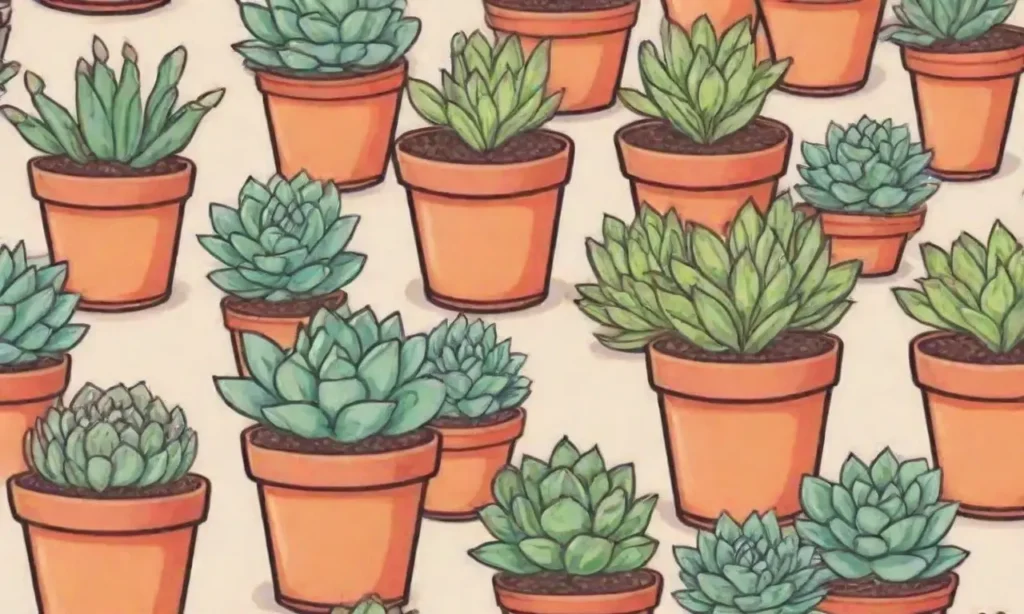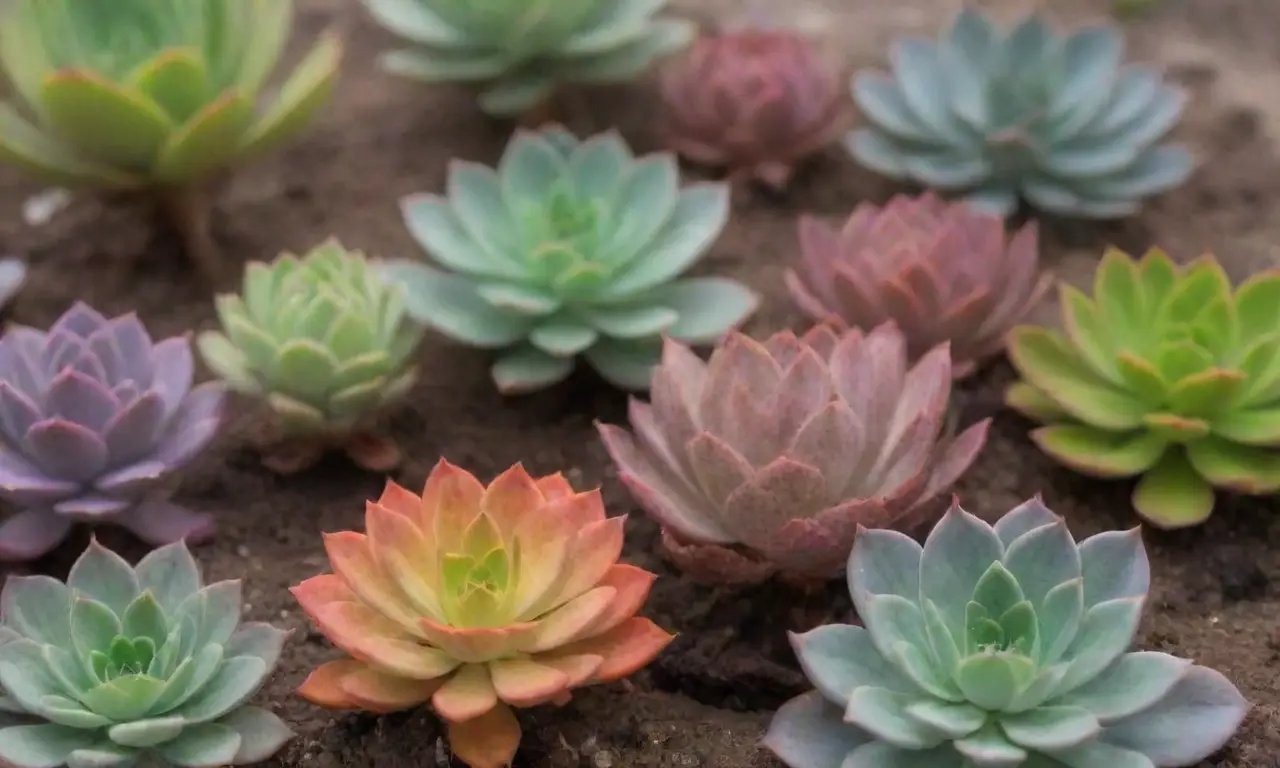
How to Save Your Succulents from the Dreaded Fungal Blight

Introduction
Succulents are beloved for their beauty, diversity, and easy care requirements, making them popular choices for plant enthusiasts and casual gardeners alike. However, these lovely plants are susceptible to a range of diseases, and one of the most troubling is fungal blight. This condition arises from various pathogens affecting the leaves, stems, and roots, leading to decay and potentially the death of your precious succulents. Understanding how to identify, prevent, and treat fungal blight is essential in maintaining healthy and vibrant succulent gardens.
In this article, we will delve deeply into the world of succulent care, focusing specifically on the prevention and management of fungal blight. We will discuss its causes, symptoms, and how to implement effective treatment strategies. Whether you are a newcomer to succulent gardening or a seasoned enthusiast facing this unwelcome threat, this guide will provide you with thorough insights and practical tips to rescue your plants and ensure they thrive.
Understanding Fungal Blight: Causes and Symptoms
Fungal blight is ultimately a result of a variety of fungal pathogens that thrive in moist environments and can easily infect succulents, particularly when their care conditions are less than ideal. The most common culprits include Pythium, Fusarium, and Botrytis species. Understanding these pathogens and their preferred conditions is key to preventing infestations.
The Role of Moisture
A primary contributor to the development of fungal blight is the presence of excess moisture. Succulents require well-draining soil to thrive. Overwatering, humidity, and poor aeration around the plant can create an inviting environment for fungi. When water collects either on the leaves or at the base of the plant, it can lead to leaf rot and other water-related diseases. Therefore, you must maintain an ideal watering schedule that allows the soil to dry out completely between waterings.
Warning Signs of Fungal Blight
Symptoms of fungal blight often present as wilting leaves, black or brown spots, and a general yellowing of the plant. In severe cases, the succulent may exhibit a mushy texture, indicating rot. You might also notice a fuzzy or web-like growth on the leaves or soil, which is indicative of mold. If these signs are detected early, treatment becomes significantly easier and more effective.
Environmental Factors
Apart from watering practices, several environmental factors can also contribute to fungal blight outbreaks. Insufficient light exposure can weaken succulents, making them more prone to disease. Ensure your plants receive adequate sunlight for at least six hours a day. Additionally, avoid placing succulents in overly cramped spaces, as this can lead to poor air circulation, further exacerbating the conditions conducive to fungal growth.
Effective Prevention Strategies for Fungal Blight
Preventing fungal blight is essential to maintaining a healthy succulent garden. Here, we will explore various proactive measures that can safeguard your succulents against this common threat.
 Recognizing and Managing Thrips Infestation in Succulents
Recognizing and Managing Thrips Infestation in SucculentsChoosing the Right Soil
The foundation of a healthy succulent lies in its soil. Using a well-draining cactus potting mix or crafting your own blend with components like perlite, coarse sand, and potting soil can significantly reduce the risk of overwatering. Implementing materials that allow for proper drainage promotes airflow around the roots and diminishes moisture retention, creating a hostile environment for fungal spores.
Proper Watering Techniques
Watering succulents requires a careful approach. Consider adopting the soak and dry method, which means soaking the soil when watering but allowing it to dry out completely before digging in again. During the growing season (spring and summer), succulents may need watering every two weeks, while the winter months typically see them requiring less frequent care. Always check the soil moisture by inserting a finger about an inch deep—if it feels dry, it’s time to water.
Location Matters
Placement of succulents plays a pivotal role in reducing the risk of fungal infection. Ensure they are kept in areas with sufficient airflow and bright light. Consider rotating your plants regularly to expose all sides to sunlight. If you live in a humid area, you could consider placing a small fan near your plants to help evaporate excess moisture.
Treatment Methods for Infected Succulents

If your succulents have already succumbed to fungal blight, don't despair; effective treatment methods exist. Identifying the infection early can make all the difference. Let’s discuss effective treatments.
Pruning and Cleaning
The first step in addressing fungal blight upon discovery is thorough inspection and pruning. Remove all affected parts of the plant, including leaves that show signs of decay or spots. Use sterilized scissors to prevent further infection spread. After pruning, ensure that any remaining parts of the plant and surrounding soil are cleaned and free from any fungal debris or organic matter that could harbor pathogens.
Application of Fungicides
If your succulents are significantly infested, consider applying a fungicide. Products containing ingredients like copper sulfate or potassium bicarbonate can effectively help combat existing fungal infections. Be sure to follow the instructions carefully to avoid harming your plants. For home remedies, a diluted mixture of baking soda and water can also be sprayed on infected areas to inhibit fungal growth.
 Dealing with Aphids: Prevention and Treatment for Succulent Health
Dealing with Aphids: Prevention and Treatment for Succulent HealthAdjusting Care After Infection
Post-treatment, evaluate the care practices you had in place that may have contributed to the infection. Monitor watering techniques and environmental conditions closely, adjusting as necessary to prevent reoccurrence. An emphasis on maintenance can help ensure your plants return to full health in due course.
Importance of Ongoing Maintenance
Maintaining healthy succulents is an ongoing commitment that extends beyond just prevention and treatment of fungal blight. After addressing an infection, consider the long-term health of your succulents.
Regular Inspections
Develop a habit of regularly inspecting your plants. Check for signs of stress or signs of fungal blight. This not only allows for early intervention but also helps familiarize you with what healthy succulents should look like. Early identification can save you much heartache and effort down the line.
Fostering Soil Health
In addition to visual inspections, you should regularly test the soil health using pH meters or moisture meters to ensure the right balance for succulent growth. A healthy soil structure not only fosters robust plant growth but also ensures effective drainage, which is paramount in preventing fungal infections.
Seasonal Practices
Lastly, seasonal practices like avoiding watering in colder months or adjusting to seasonal light changes can significantly bolster your plant's defenses against blight. Taking the time to understand how each season affects your succulents helps create a resilient indoor or outdoor plant environment.
Conclusion
In conclusion, facing the dreaded fungal blight does not have to spell disaster for your succulent collection. With knowledge and careful attention, you can confidently manage and mitigate this threat. By understanding its causes, recognizing signs of infection, and implementing preventive and treatment strategies, you can help your succulents flourish.
Remember that the health of every plant lies in the balance of watering, soil selection, environmental conditions, and diligent care. By fostering good habits, conducting regular inspections, and remaining proactive, you can ensure the vibrant life of your succulents for years to come. Embrace these practices and turn those unfortunate encounters with fungal blight into valuable lessons that only enhance your gardening journey. Happy planting!
 Understanding and Combatting Succulent Stem Rot: A Guide
Understanding and Combatting Succulent Stem Rot: A GuideIf you want to read more articles similar to How to Save Your Succulents from the Dreaded Fungal Blight, you can visit the Diseases in Succulents category.






You Must Read